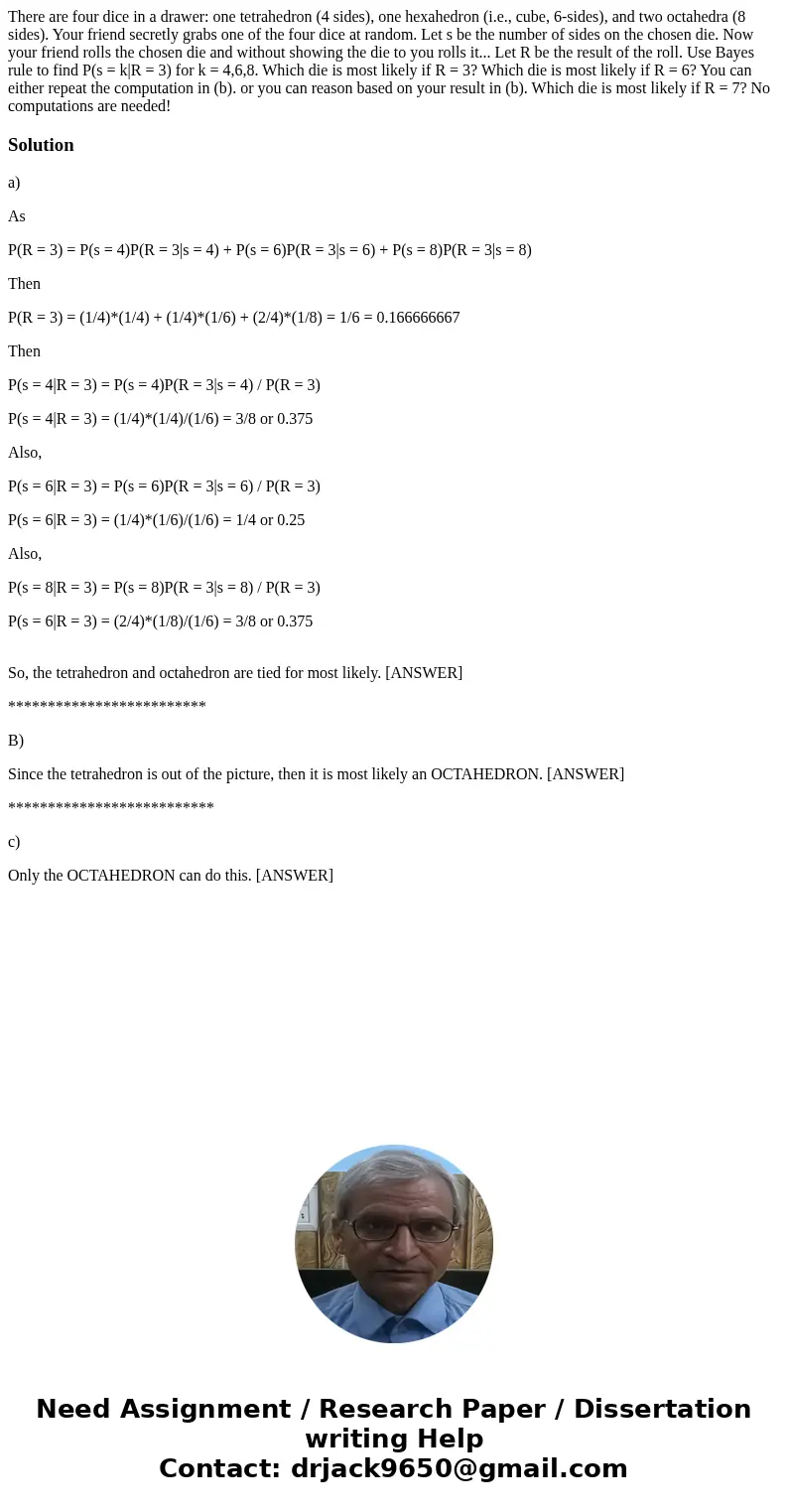There are four dice in a drawer one tetrahedron 4 sides one
There are four dice in a drawer: one tetrahedron (4 sides), one hexahedron (i.e., cube, 6-sides), and two octahedra (8 sides). Your friend secretly grabs one of the four dice at random. Let s be the number of sides on the chosen die. Now your friend rolls the chosen die and without showing the die to you rolls it... Let R be the result of the roll. Use Bayes rule to find P(s = k|R = 3) for k = 4,6,8. Which die is most likely if R = 3? Which die is most likely if R = 6? You can either repeat the computation in (b). or you can reason based on your result in (b). Which die is most likely if R = 7? No computations are needed! 
Solution
a)
As
P(R = 3) = P(s = 4)P(R = 3|s = 4) + P(s = 6)P(R = 3|s = 6) + P(s = 8)P(R = 3|s = 8)
Then
P(R = 3) = (1/4)*(1/4) + (1/4)*(1/6) + (2/4)*(1/8) = 1/6 = 0.166666667
Then
P(s = 4|R = 3) = P(s = 4)P(R = 3|s = 4) / P(R = 3)
P(s = 4|R = 3) = (1/4)*(1/4)/(1/6) = 3/8 or 0.375
Also,
P(s = 6|R = 3) = P(s = 6)P(R = 3|s = 6) / P(R = 3)
P(s = 6|R = 3) = (1/4)*(1/6)/(1/6) = 1/4 or 0.25
Also,
P(s = 8|R = 3) = P(s = 8)P(R = 3|s = 8) / P(R = 3)
P(s = 6|R = 3) = (2/4)*(1/8)/(1/6) = 3/8 or 0.375
So, the tetrahedron and octahedron are tied for most likely. [ANSWER]
*************************
B)
Since the tetrahedron is out of the picture, then it is most likely an OCTAHEDRON. [ANSWER]
**************************
c)
Only the OCTAHEDRON can do this. [ANSWER]

 Homework Sourse
Homework Sourse